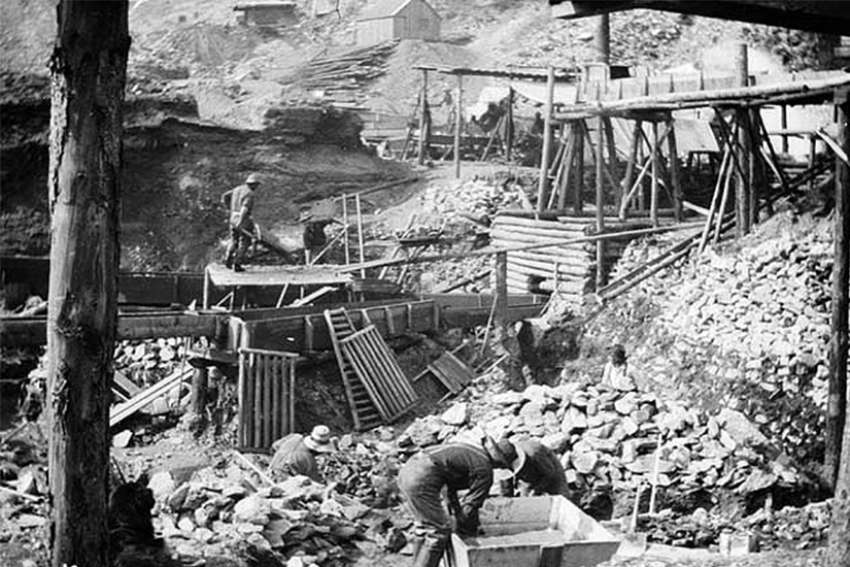Robert Brehl: Christmas treasure found in Klondike gold rush
By Robert Brehl
On Christmas Eve during the Klondike gold rush, three young miners found an unexpected treasure more valuable than gold dust, and their chivalry is worth remembering 120 Christmases later.
This Christmas story is recorded in a little-known book published in 1938 called I Was There: a Book of Reminiscences by Edith Tyrrell, a rather extraordinary woman whose husband holds an interesting place in Canadian history.
Joseph Burr Tyrrell was a geologist, cartographer and mining consultant who was the first to discover dinosaur bones and coal in Alberta’s Badlands in 1884. The Royal Tyrrell Museum of Palaeontology in Drumheller, Alta., is named in his honour. In retirement, he owned and operated a huge apple orchard in Scarborough on the land now home to the Toronto Zoo.
Edith Tyrrell, founder and first president of the Women’s Association of the Mining Industry of Canada, shared her husband’s interest in geology. Twice she went to the Yukon during the gold rush and it was on her first visit she heard of the Christmas story to follow.
Gold was discovered in August 1896 on Bonanza Creek near Dawson City, but the world didn’t hear of it until 1897. Word then spread like wildfire with a stampede of more than 100,000 people from all over the world descending upon the Klondike, many not prepared for the harsh conditions.
The temperatures could stay below minus-40C for weeks and miners lived in cabins they built haphazardly with gin bottles as makeshift windows and wood-burning stoves as the only heat source.
According to Edith Tyrrell, on Christmas Eve 1897 three men — Johnny Lind, Skiff Mitchell and Bill Wilkinson — travelled 25 kilometres from their cabin on Eldorado Creek to Dawson City for supplies.
Upon their return, their dogs were weary hauling the heavily-laden sleds so they took a short breather. They noticed a faint light coming from what they thought was a deserted cabin. They investigated and as they got closer, they could hear a moaning sound.
Inside, they discovered a dying young woman who had recently given birth to a baby girl. They started a fire in the stove and fetched a bottle of brandy from their supplies. They tried to give the mother a teaspoon of brandy “but she was past swallowing, and as they looked she gave a last quivering sigh and was gone,” Tyrrell writes.
They took the baby from the dead woman’s arms and Wilkinson wrapped the child in soft woolen underwear. The three men then lined a packing box with newly purchased blankets to create a makeshift bassinet.
Just then, the husband arrived with a doctor from Dawson. Looking for help all day in extreme minus-45 cold and seeing his dead wife, the man collapsed and died. It was pleurisy, or lung infection, the doctor said. The couple was from the U.S. Midwest and months earlier headed out on their Klondike adventure unprepared for the North.
Sadly, their story was all too common. Hundreds, if not thousands, perished seeking gold in the Klondike. And very few miners found fortune — or took any wealth out of the Yukon, instead leaving it in gambling halls, saloons and brothels. It’s estimated only 2,000 miners found gold and only about 200 found significant amounts — and only 40 or so left the Klondike with their wealth.
After telling the miners how to feed the baby and keep her warm, the doctor departed for another call and the men headed back to their own cabin with bassinet and baby.
“Never had so strange a load gone along the Eldorado trail, or any trail for that matter, as went that Christmas Eve,” writes Tyrrell. “The dog team, the three men and the baby, while the northern stars shone brightly on their pathway.”
Back at their cabin, the men took shifts through the night holding the sleeping baby or feeding her teaspoons of tinned milk, warm water and brandy.
On Christmas morning, word spread along Eldorado Creek of this miracle baby and 16 women miners all arrived offering help. A Nova Scotia woman named Mrs. Brock, who went to the Klondike with her husband after their own infant died, took charge while the three men began collecting gold dust from miners. Their initial collection amounted to $400 and it was sorely needed: A pint of milk in Dawson cost $2 (or roughly $50 today) and eggs were $12 per dozen.
The baby was christened Edna Eldorado. Tyrrell does not say what ultimately happened to the baby, but she brought joy to many that Christmas long ago. And the story of “how Bill, Dave and Johnny had been led by the Christmas star to the place where the young child was” became folklore in the Klondike.
The story holds obvious parallels to the original Christmas story and underlines the goodness in humanity, especially amidst adversity.
Johnny Lind — one of the three good men — was one of those 40 people to leave the Klondike with his wealth. He used it to co-found St. Marys Cement in St. Marys, Ont., which still exists today and has been part of the construction of many Canadian landmarks such as Maple Leaf Gardens, the CN Tower and Roy Thomson Hall. He and the Tyrrells remained friends for almost 50 years, too.
Merry Christmas to you and yours.
(Brehl is a writer and author of several books.)
Please support The Catholic Register
Unlike many media companies, The Catholic Register has never charged readers for access to the news and information on our website. We want to keep our award-winning journalism as widely available as possible. But we need your help.
For more than 125 years, The Register has been a trusted source of faith-based journalism. By making even a small donation you help ensure our future as an important voice in the Catholic Church. If you support the mission of Catholic journalism, please donate today. Thank you.
DONATE

